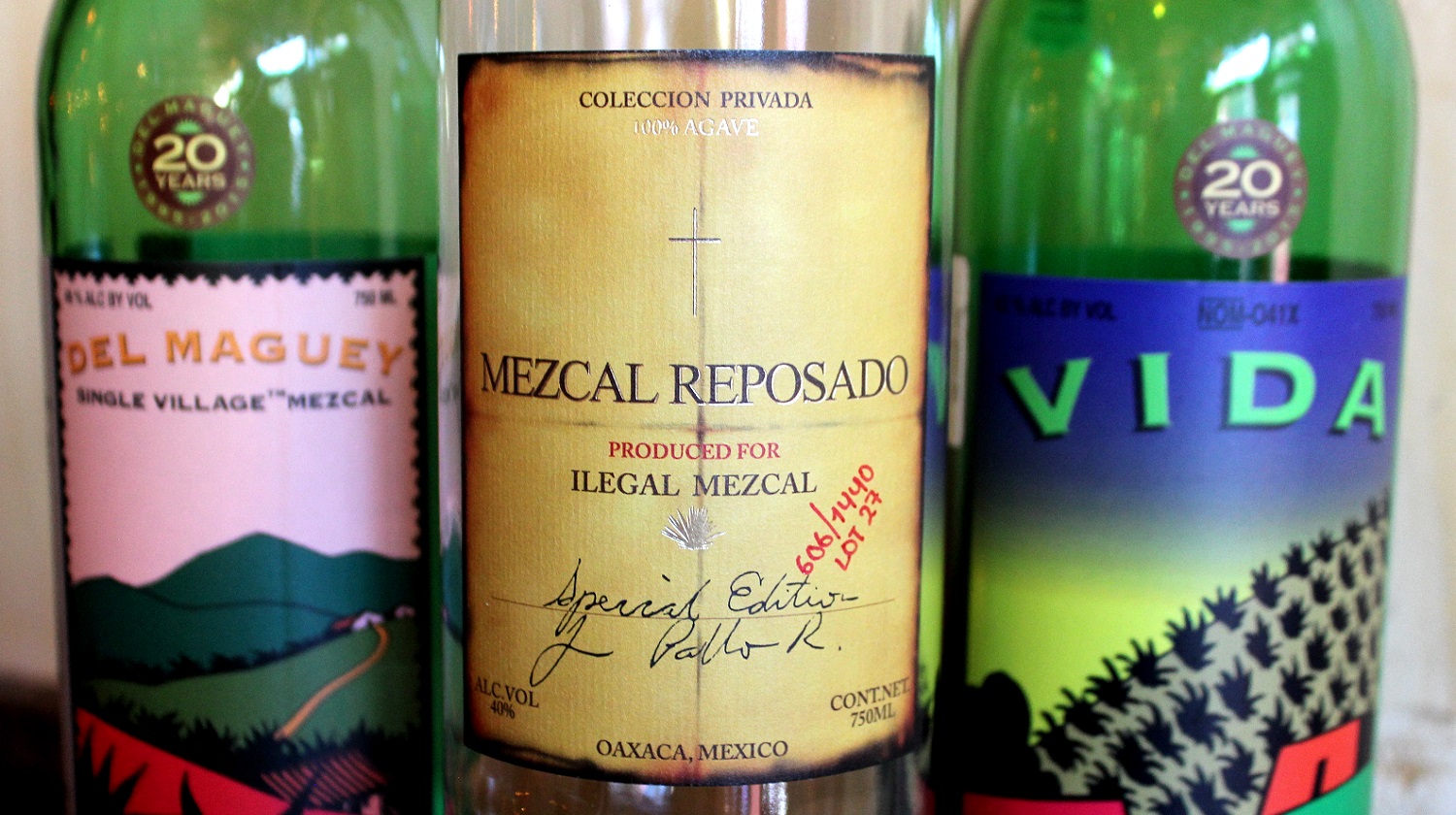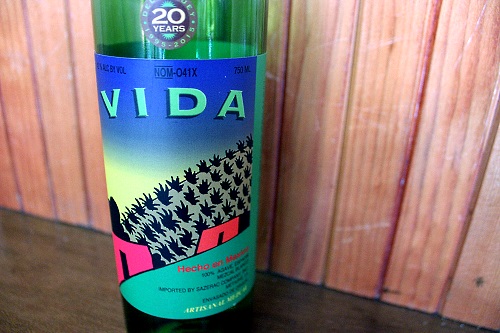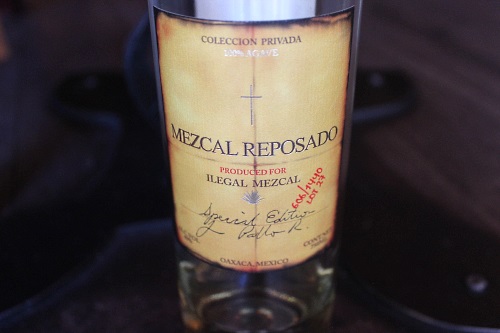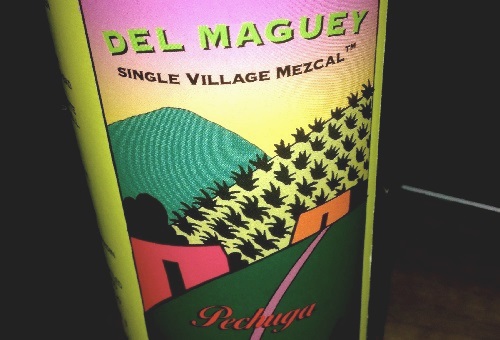Let’s pretend that scotch and tequila had a weird night, and had a little love child. That love child would be mezcal. Technically, all tequilas are mezcals, mezcal is a mezcal, but not all mezcals are tequila, Confused? While tequila is made from blue agave, mezcal is made from 30 varieties of agave – specifically the pina – or heart of the agave plant. Mezcal is classified as an alcoholic beverage made from agave that is native to Mexico. It’s made primarily in Oaxaca, but occasionally made in one of the other 6 locations that have been approved.
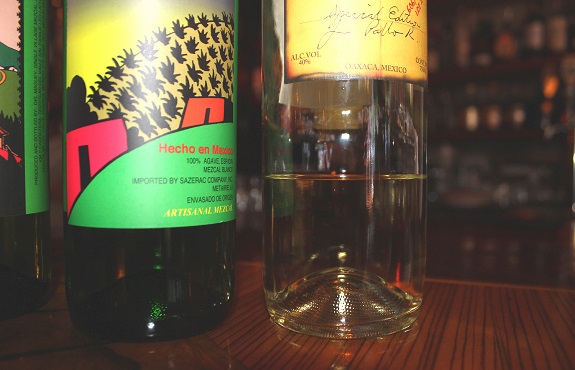
Production
Mezcal is usually made in villages, in small batches. The process begins with adult agave, that has had time to grow to maturity (sometimes taking up to 15 years) and has the primary ingredient, the pina. The root and leaves are cut off, and what’s left is cooked underground in a pit covered with rocks. This process is what gives mezcal it’s distinct smokey flavor (hence, the scotch connection) and allows the sugars to break down in order to distill.
After cooking for three days, the plants are ground usually by a donkey pulling a stone wheel, then fermented. The mash is then distilled twice, like tequila. It is then bottled, aged in oak barrels, or when making Pechuga, it is distilled a third time with fruit, almonds, rice, and , a chicken breast! This is meant to even out the fruit and some say it adds to the overall flavor.
Aging
When mezcal is either unaged or aged for less than 2 months, it is called “Joven”, or young. After being aged in oak for 2 months to a year, mezcal is classified as “Reposado”, or rested. If it’s aged between 1 and 3 years, it’s referred to as “Anejo”, or aged. In the case that mezcal is aged for over 3 years, it is given the title of “Extra Anejo”.
Give It A Kiss
Although many enjoy mezcal in cocktails, it’s traditionally meant to drink alone. Many suggest to not shoot it, but sip or “kiss” it. If that’s your style, “Arriba, abajo, al centro y pa’ dentro”. (Glasses up, glasses down, in the center, and drink!) If you want to get real tradicional – grab some mezcal worms, orange slices, and mole.
Here are a few of my favorite mezcals, listed from cheapest to most expensive:
Vida San Luis Del Rio – $35
This mezcal is the first I tried, and I think it’s a great first bottle. It’s inexpensive, and gives you a great idea of what to expect. It’s flavor is full and smooth enough to sip, but it’s also my favorite to use in cocktails. It’s all fruit in the nose, opening up to vanilla and honey. It finishes long with cinnamon, and honey.
Ilegal Reposado – $55
Another bottle meant only for sipping, the Ilegal reposado is aged for 4 years in oak barrels, resulting in a beautiful mezcal. It’s carmelly, with hints of pear, cinnamon, and a bit of smoke. It finishes velvety, with vanilla and toffee. Ilegal prides themselves on showcasing the agave in their mezcals, hoping that the smokiness will come second. The story behind the name of this small artisan distillery is a cool one, but too long for this article. Check it out.
Chichicapa Del Maguey – $68
Similar to Vida on the nose, the Chichicapa is a bottle for those that want to sip their mezcal. The flavors that come through in a cocktail are about the same as the Vida, and it’ll cost you over $30 more for the same result. My suggestion is to buy this bottle if you’re an intermediate mezcal fan.
Pechuga – $196
Here’s the wild card in the bunch. Pechuga (Spanish for breast) is the result of an old tradition in which the mezcal is distilled for a third time. This time with wild apples, plums, pineapple, banana, rice, almonds, and chicken! The chicken breasts are washed thoroughly to remove any fat, and hung in the still.
Expect to spend a lot of cash on this bottle, but I think it’d be a fun addition to a home bar – and a fun story to tell. (photo credit)
A bout the Author: Ashley R. is Bartender in Boise, Idaho. She’s known for challenging traditional expectations regarding what a cocktail should be, and having an intuitive understanding of the way flavors interact.
bout the Author: Ashley R. is Bartender in Boise, Idaho. She’s known for challenging traditional expectations regarding what a cocktail should be, and having an intuitive understanding of the way flavors interact.
